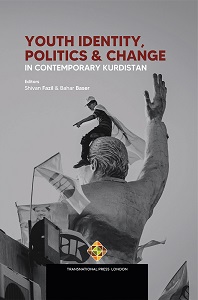Youth and Nationalism in the Kurdistan Region of Iraq
Youth and Nationalism in the Kurdistan Region of Iraq
Author(s): Sofia Barbarani
Subject(s): Civil Society, Nationalism Studies
Published by: Transnational Press London
Keywords: Youth and Nationalism; Kurdistan Region of Iraq; Nazi Germany; nostalgic soul;
Summary/Abstract: No matter where in the world you find yourself, the idea of youth and youth movements will always be a highly romanticized one. From the young men intent on bringing down France’s absolute monarchy in the late eighteenth century and Mazzini’s Young Italy movement in the nineteenth century, to the Edelweiss Pirates in 1930s Nazi Germany and the student-led anti-gun group founded three years ago in the United States following a deadly shooting at the Marjory Stoneman Douglas High School. For the nostalgic soul, youth movements are vestiges of days gone by—a time with few complications, other than fighting for one’s ideals. Although eruptive and episodic, these movements were far from unstudied; they were, instead, organized and conscious. They were attempts by young men and women to bring about or resist societal change and took on a variety of forms, including “student rebellions, cultural innovations (literary, artistic, music) scientific revolutions, religious reforms, ethnic revolts, nationalist and political generations, and environmental, peace and anti-war movements” (Braungart and Braungart 2001, 16668). Having focused on young diaspora Kurds during my master’s degree in London, I was introduced to Kurdish youth movements both from afar and within an academic setting. It wasn’t until I relocated to the Kurdistan Region of Iraq (KRI) in 2013 that I began to truly appreciate the intricacies of today’s youth and the challenges they face. In this chapter, I highlight such challenges while focusing on nationalism and the ways in which it is being championed by the youth of today.1 To better understand the current brand of youth nationalism, I will explore what the movement meant to Kurdistan’s forebears, why it changed so dramatically after the mid-twentieth century, and how it became multifaceted and unfixed.
Book: Youth Identity, Politics and Change in Contemporary Kurdistan
- Page Range: 125-138
- Page Count: 14
- Publication Year: 2021
- Language: English
- Content File-PDF

